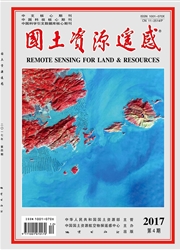

 中文摘要:
中文摘要:
基于3S技术和LandsatTM 遥感图像,解译得到1990年9月、2000年6月和2010年9月的锦葫沿海地区城市用地分布图。采用时空动态约束的城市元胞自动机(celluarautomata,CA)模型,对锦葫沿海地区2020年的城市空间形态进行模拟。该模型采用了多时段动态的转换规则,即利用转移概率矩阵基于多时段基础数据预测增加的城市用地总量,作为城市CA模型的约束条件,并利用Logistic回归技术对CA的转换规则进行校正。分析计算了模拟结果的景观格局指数,分析得知:1990年9月—2010年9月间,城市用地形状不断复杂化,破碎化程度加重;2010年9月—2020年9月间,城市用地形状规则化,破碎化的程度趋于缓解;1990年9月—2020年9月间,城市用地的平均斑块大小基本呈增大趋势,最大用地斑块的影响程度逐年加大,城市用地斑块的聚集程度加速增长;锦葫沿海城市的地理空间正逐步拉近,伴随着锦葫地区交通运输条件的改善,锦葫空间一体化发展将成为一种必然的趋势。
 英文摘要:
英文摘要:
Jinhu coastal area urban land distribution maps in 1990, 2000 and 2010 were compiled with the help of Erdas and ArcGIS, and they served as the basis for urban spatial expansion simulation. The authors used urban CA model which had time and space dynamic constraints to simulate Jinhu coastal area urban spatial form of 2020. The advanced nature of this model lies in the multi - time interval phase transition rule. It uses transition probability matrix to predict urban land total quantity as constraints of CA model, and utilizes logistic regression to adjust the transition rule of CA model. The authors calculated landscape pattern indexes of various stages and drew the following conclusions: the urban land shape complicated unceasingly, and the degree of fragmentation increased from 1990 to 2010; nevertheless, the urban land shape was becoming regularized and the degree of fragmentation tends to decline from 2010 to 2020. During the period of 1990 -2020, the average patch size is on the rise, the influence of the largest patch is enlarging year by year, and the accumulation of urban land is accelerated. The geographical space of cities in Jinhu coastal area is gradually narrowed and, with the improvement of regional transportation conditions, the spatial integrated development of Jinhu will become an inevitable trend.
 同期刊论文项目
同期刊论文项目
 同项目期刊论文
同项目期刊论文
 Modeling the quality and quantity of runoff in a highly urbanized catchment using Storm Water Manage
Modeling the quality and quantity of runoff in a highly urbanized catchment using Storm Water Manage Characterization of Air Pollution Index and Its Affecting Factors in Industrial Urban Areas in North
Characterization of Air Pollution Index and Its Affecting Factors in Industrial Urban Areas in North Combining CLUE-S and SWAT models to forecast land use change and non-point source pollution impact a
Combining CLUE-S and SWAT models to forecast land use change and non-point source pollution impact a Application of land-use change model in guiding regional planning: A case study in Hun-Taizi River W
Application of land-use change model in guiding regional planning: A case study in Hun-Taizi River W Land Use and Land Cover Change Analysis and Prediction in the Upper Reaches of the Minjiang River, C
Land Use and Land Cover Change Analysis and Prediction in the Upper Reaches of the Minjiang River, C 期刊信息
期刊信息
